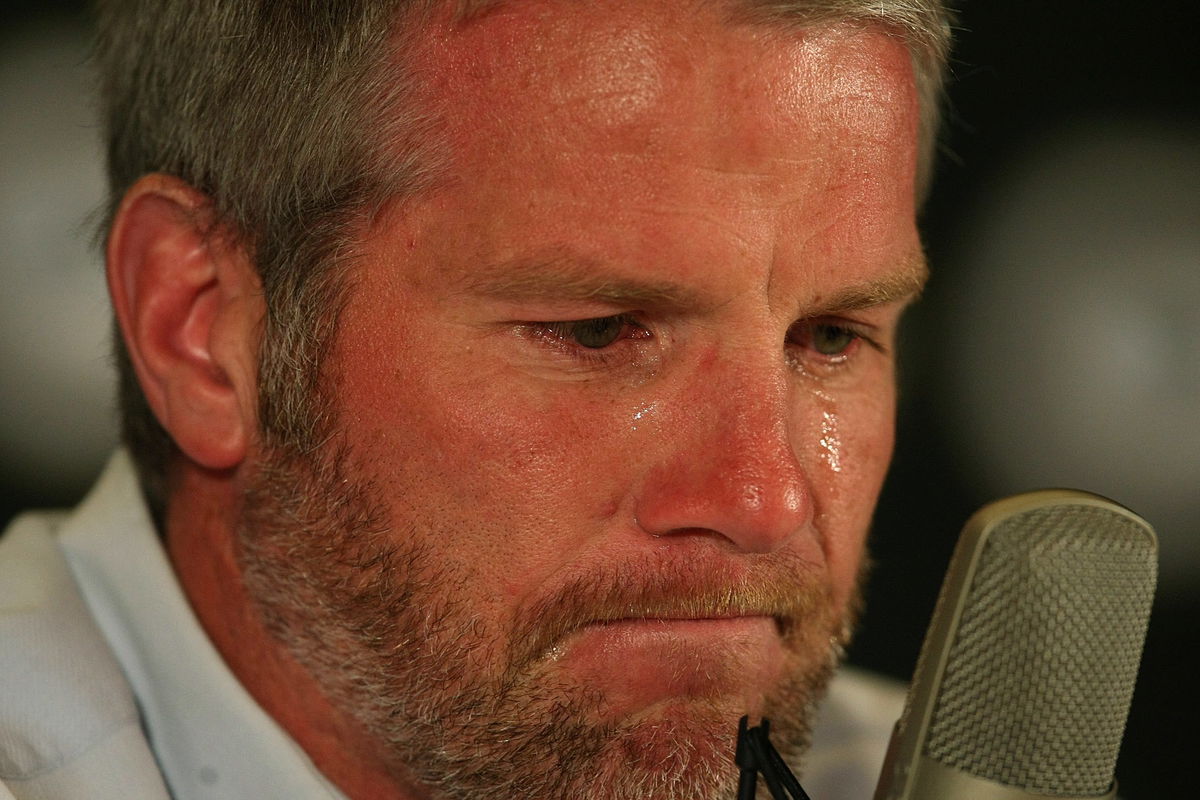
Getty
GREEN BAY, WI – MARCH 6: Quarterback Brett Favre of the Green Bay Packers announces his retirement at a press conference at Lambeau Field March 6, 2008 in Green Bay, Wisconsin. (Photo by Jonathan Daniel/Getty Images)

Getty
GREEN BAY, WI – MARCH 6: Quarterback Brett Favre of the Green Bay Packers announces his retirement at a press conference at Lambeau Field March 6, 2008 in Green Bay, Wisconsin. (Photo by Jonathan Daniel/Getty Images)
As September 8 approaches, it will mark ten years since the tragedy that shook the football world and left Jessica VerSteeg in lifelong regret. VerSteeg and Tyler Sash, both kids from Oskaloosa, Iowa, had what many saw as the perfect relationship—funny, stylish, magnetic. But beneath that picture, Sash was quietly fighting constant pain. His years at the University of Iowa and later with the New York Giants left him with a torn shoulder and repeated concussions. Those injuries became the shadows he couldn’t escape.
Watch What’s Trending Now!
Later, in moments of desperation, Sash turned to VerSteeg for relief. He asked if he could use m——–a to cope with his pain, but she refused. That choice, and the heartbreaking days before his accidental overdose in 2015, changed the trajectory of her life. She entered the medical marijuana industry in California, determined to help where she once felt powerless. And now, a decade later, Brett Favre steps in—not just to honor the Super Bowl champion, but to remind America of the weight athletes silently carry.
Therefore, Favre has a simple request. He wants the public to watch Concussed: The American Dream, a film that tells not only Sash’s story but “a story far too many families know too well.” On his Instagram, Favre explained that it’s “a story that still needs to be told.” And the facts are hard to ignore.
ADVERTISEMENT
At the time of his death at 27, the Super Bowl champ had Stage 2 CTE, a degenerative brain disease measured on a scale from 0 to 4. Reports noted that Sash experienced “confusion, memory loss, and minor fits of temper,” struggles that made finding meaningful work nearly impossible after the Giants released him in 2013. For a young man once defined by the game, life off the field became increasingly unbearable.
View this post on Instagram
So, Brett Favre underlined the bigger picture. He emphasized that the dangers of CTE are not distant—they’re real. “I’ve seen it. I’ve lived it. And I’ve watched too many young lives cut short because we didn’t have the information, support, or awareness we needed at the time.” Sash’s mother echoed that sentiment, saying that understanding the CTE diagnosis helped explain the behaviors she didn’t recognize in her son. For her, his drive to succeed in football—the very trait that made him a champion—ultimately became the reason for his death.
ADVERTISEMENT
Tyler Sash’s mother blamed football for his death
It was Tyler’s own decision to choose the gridiron over the hardwood, and his mother never forgot it. “I love football. I’m not trying to ruin football for anyone,” Barney Sash said in an emotional interview on the program. “My son went the football route. He could have played basketball. It wouldn’t have cost him his life.” Her words painted a raw picture of a mother torn between pride and regret, knowing the game her son loved so deeply eventually took him away.
ADVERTISEMENT
Not only that, those closest to Tyler noticed the changes after his time with the New York Giants ended. His former girlfriend, Heather Dickinson, who had known him since second grade, told Outside the Lines that when Sash returned to Oskaloosa, he wasn’t the same. She revealed he showed signs of confusion and erratic behavior that many now recognize as symptoms of CTE.
In fact, Dickinson detailed the daily struggles that haunted him. “Sometimes he was sad, and he couldn’t tell me why. Sometimes he was angry. He would lose his cell phone, his wallet, his keys,” she said. She also recalled how, “He was always researching concussions, and I think that’s ‘cause he was scared.” That fear, she explained, consumed him more with time.
Top Stories
Forced to Leave FOX, Cowboys Legend Troy Aikman Says ESPN Is Like ‘U.S. Government’ & Clearly Distinguishes the Two Networks

What Happened to T.J. Watt? Why Is He Hospitalized? Steelers Announce Latest News on LB Before Dolphins Game

FOX Issues Strict Ban on Terry Bradshaw But NFL Legend Defies It to Join Popular Morning Show

Cam Newton Reveals Exactly Why 32 NFL Teams Blacklisted Him as Panthers Legend Announces Retirement Status

Colin Kaepernick’s Wife Questions NFL Logic After Colts Sign 44-Year-Old QB Philip Rivers Over Kap

It all began after shoulder surgeries left him dependent on pain medication. Dickinson remembered, “He always used to tell me he was going to die young because he said he had the body of an 80-year-old.” Those haunting words became reality. And as Brett Favre urged, watching Concussed: The American Dream ensures Tyler’s story—and the warning it carries—is never ignored again.
ADVERTISEMENT
ADVERTISEMENT
ADVERTISEMENT
ADVERTISEMENT

